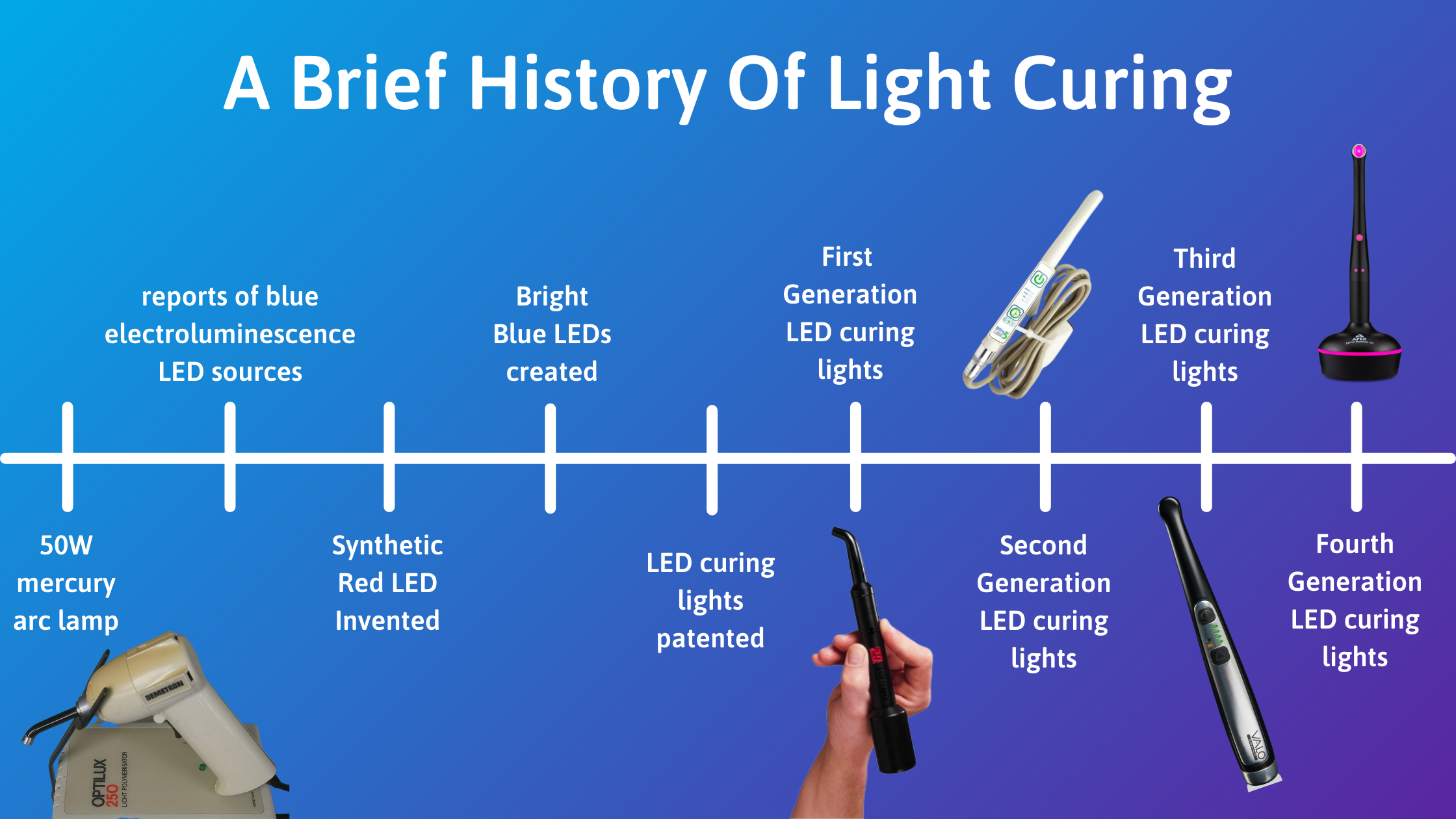A Brief History of Dental Curing Lights
Dentistry has evolved significantly in the time that it has been around. Take a journey with us to the time of the first curing lights!
The first curing lights were more clunky and inconvenient from what we know today
One of the first curing lights on the market was the 50W mercury arc lamp. These lamps emitted approximately 365nm of light for polymerizing UV-activated composites and fissure sealants. These dinosaurs were known to be bulky and take time to preheat while only producing low irradiance levels and limited depth of cure in addition to being corded and needing to be plugged in.
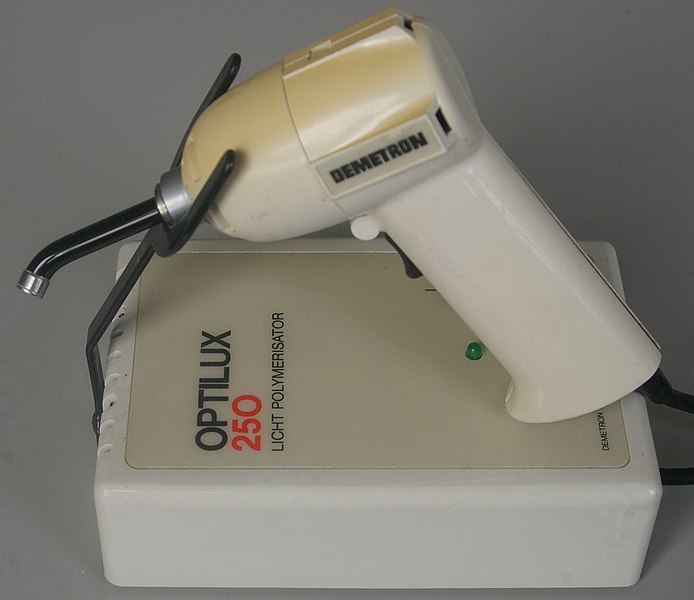
One of the first dental curing lights; Old Demetron Optilux 250* dental curing light.
The Discovery Of LED Lights and how dentistry has changed
Flash forward to 1907, when reports of Blue electroluminescence LED sources from silicon carbide crystals surfaced. Synthetic red LED, A stronger, more efficient, and portable light, was invented in 1962. While the bright blue LED’s that we know today were created in 1991. However, the LED curing light would take two more years to be patented in 1993.
Welcome to the next generation of curing.
The First Generation of LED Lights (1999-2002)
First-generation LED curing lights were small and portable, containing between 7 to 19 low-energy LEDs. The first on the market was Akeda’s LuxoMax®* in 1999. The light that held the most market share at the time was the Elipar™ FreeLight by 3M*.
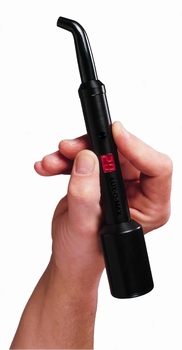
Akeda LuxoMax®*
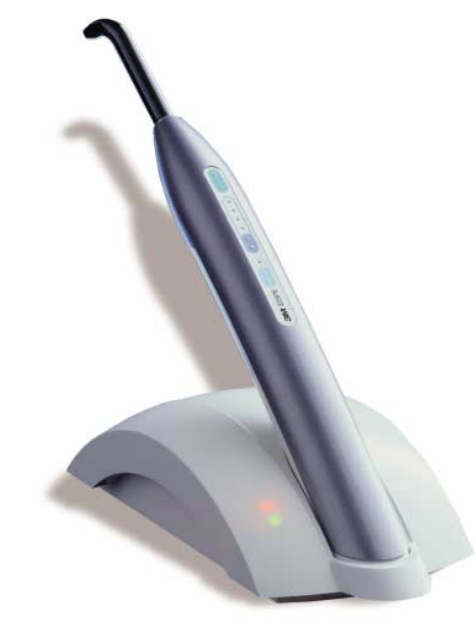
3M Elipar™ FreeLight*
The Second Generation of LED curing lights (2002 – 2004)
The second-generation LED curing lights included LED chips, which increased power outputs for more effective irradiance. Lights like Ivoclar Vivadent’s Bluephase®* and Ultradent’s UltraLume™ 5* were the top tier for second-generation lights.
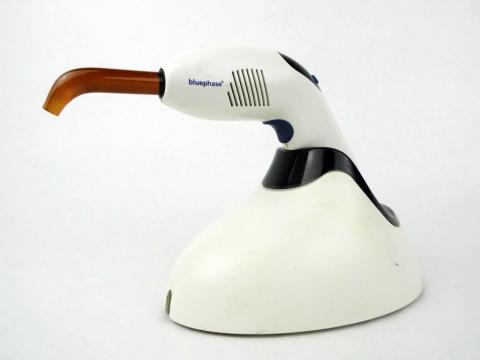
Ivoclar Vivadent Bluephase®*
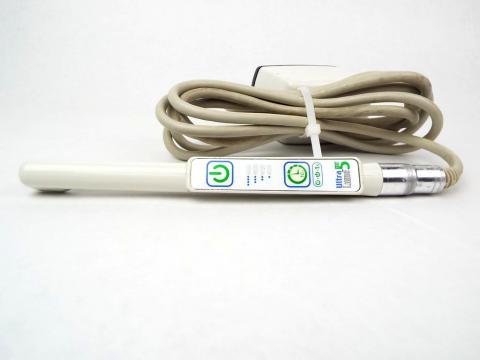
Ultradent UltraLume™ 5*
Third Generation curing lights (2004 – 2011)
The critical differentiator in third-generation curing lights was the combination of basic LEDs emitting complementary, identical, or different wavelengths altogether—the most popular being Valo™* from Ultradent and Bluephase®* 20i from Ivoclar Vivadent.
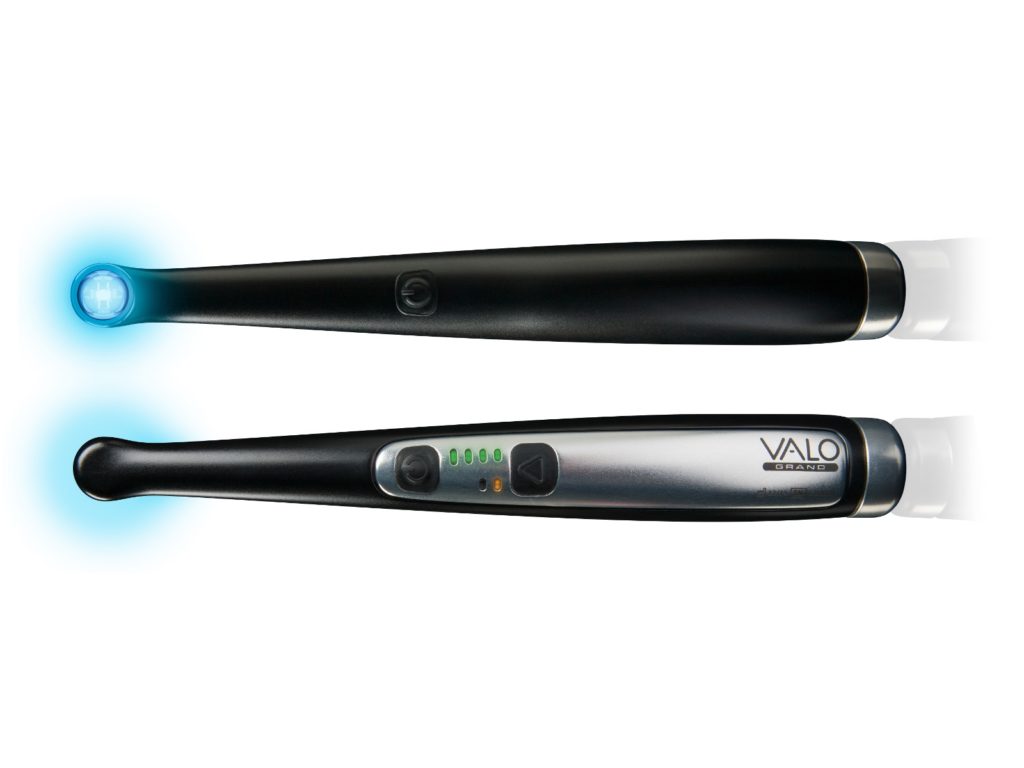
Ultradent Valo™*
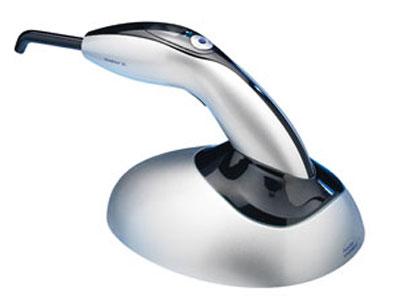
Ivoclar Vivadent Bluephase® 20i*
Modern dental curing lights are present in the fourth generation of curing lights
Fourth Generation (Present)
The present fourth-generation curing lights kept the great features of third-generation curing lights and improved upon their shortcomings with expanded wavelengths and features allowing for good conversion yet minimized heating effects common in both the second and third generation lights. Considered the first, we have the ScanWave MiniLED™*, which can scan wavelengths and can activate all photosensitive materials on the market. New to the fourth generation is the PinkWave™ curing light, using QuadWave™ technology. PinkWave™ is the first on the market to use four wavelengths: NIR (near-infrared), Blue, Red, and Ultraviolet. This update to curing lights continues the trend toward more powerful yet safe curing lights that produce better, more efficient results.
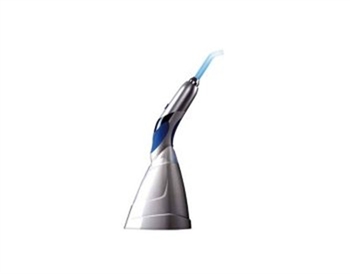
ScanWave MiniLED™*
The future of Curing Lights
Dentistry will continue to evolve and get better, but one thing is for sure, LED is here to stay. Explore our selection of dental curing lights today!
*not a registered trademark of Vista Apex
Citations:
Pélissier, Bruno & Jacquot, Bruno & Palin, William & Shortall, Adrian. (2011). Three generations of LED lights and clinical implications for optimizing their use. 1: From past to present. Dental update. 38. 660-2, 664. 10.12968/denu.2011.38.10.660.
Shortall, Adrian & Palin, William & Jacquot, Bruno & Pélissier, Bruno. (2012). Advances in light-curing units: four generations of LED lights and clinical implications for optimizing their use: Part 2. From present to future. Dental update. 39. 13-7, 20. 10.12968/denu.2012.39.1.13.

